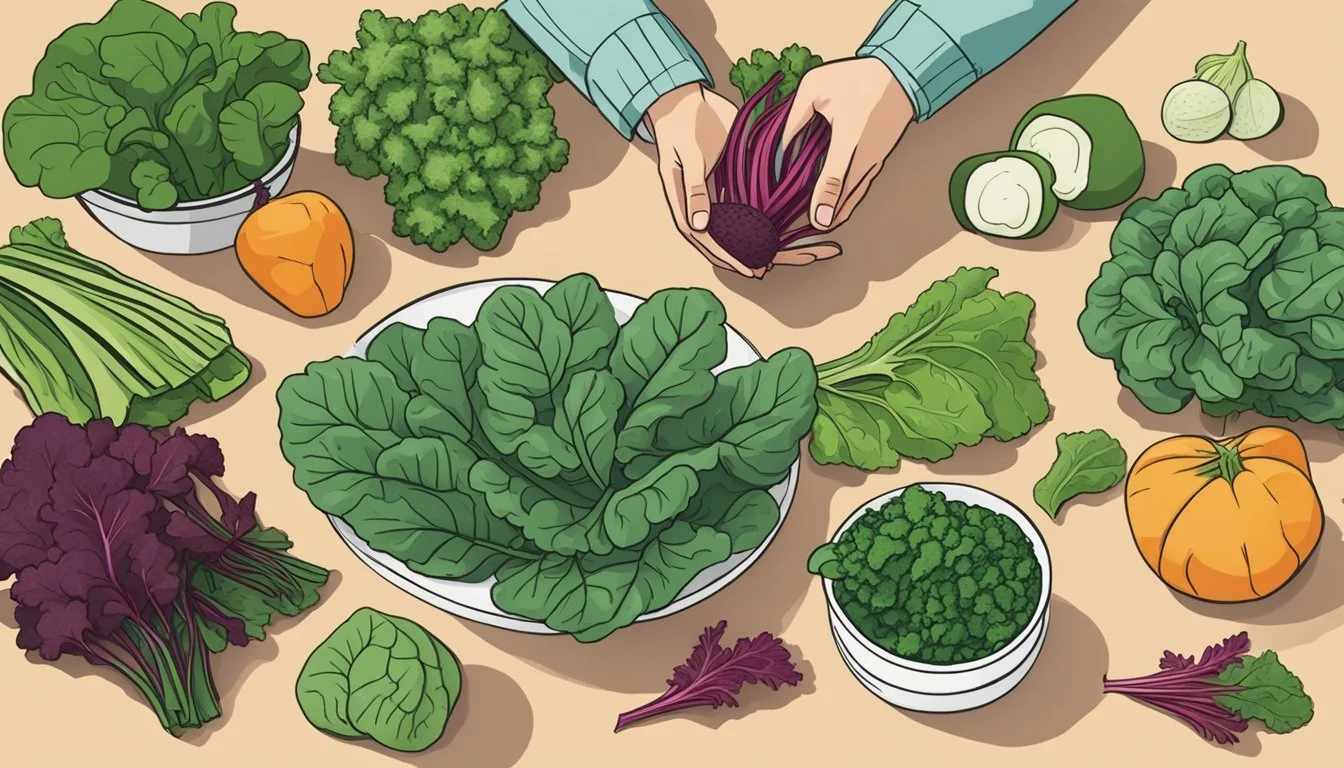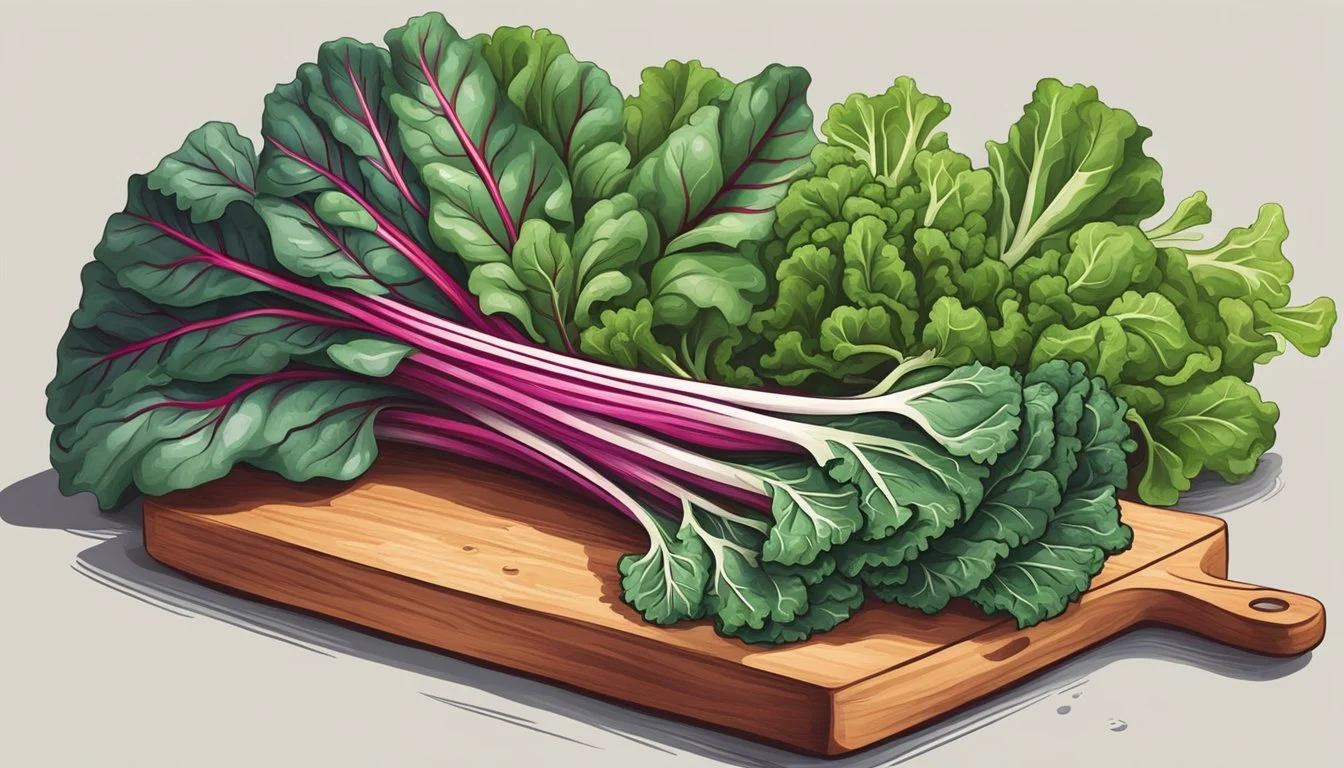Swiss Chard Substitutes
Best Alternatives for Cooking
Finding the perfect substitute for Swiss chard can seem challenging, especially given its unique earthy flavor and numerous health benefits. For those who seek an alternative that retains Swiss chard's rich taste and nutritional profile, several dark leafy greens can serve as excellent replacements. These substitutes not only match the texture and essence but also provide similar vitamins and minerals essential for a balanced diet.
Among the top alternatives are beet greens, which are closely related to Swiss chard and can be used interchangeably in most recipes. Bok choy and kale also present themselves as worthy contenders, bringing their own distinct flavors while maintaining the dark leafy green profile. Cabbage, particularly the green variety, is another versatile option, offering a slight crunch in salads and a tender texture in cooked dishes.
Including these substitutes in your meals ensures that you don't miss out on the earthy flavors and nutritional benefits of Swiss chard. Whether you're preparing a hearty stew, a fresh salad, or a vibrant stir-fry, swapping in these greens will keep your dishes both delicious and nutritious.
Understanding Swiss Chard
Swiss chard is a leafy green vegetable known for its slightly bitter, earthy flavor and rich nutritional profile. Its versatility in the kitchen makes it a popular ingredient in a variety of dishes.
Nutritional Profile and Health Benefits
Swiss chard is packed with vitamins and minerals, making it a nutritious addition to your diet. It is rich in Vitamins A, C, E, and K and also contains essential minerals such as magnesium, potassium, iron, and calcium.
One of the key benefits of Swiss chard is its high fiber content, which aids in digestion and helps maintain a healthy gut. Additionally, it is low in calories, making it a great choice for those managing their weight.
The presence of vitamins A and C supports a healthy immune system, while the iron and calcium contribute to better blood health and bone strength, respectively. Including Swiss chard in meals can help boost overall nutrient intake without adding excessive calories.
Culinary Uses
Swiss chard's versatility in the kitchen is one of its standout features. The leaves can be used in both cooked and raw dishes. In cooked dishes, Swiss chard is often added to soups, stews, and pasta dishes.
Its slightly bitter taste complements richer ingredients, creating a balanced flavor profile. When sautéed, the earthy flavor of Swiss chard becomes more pronounced and pairs well with garlic and olive oil.
For those who enjoy raw salads, Swiss chard adds a unique texture and taste. It can also be used as a side dish, steamed or stir-fried with a bit of seasoning.
Its ability to blend seamlessly into a variety of culinary applications makes Swiss chard a valuable ingredient in many kitchens.
Best Swiss Chard Substitutes
When Swiss chard is unavailable or not preferred, several vegetables can be used to achieve similar tastes and textures. Each alternative offers unique nutritional benefits that make them versatile additions to various dishes.
Spinach
Spinach is a versatile substitute for Swiss chard. Both mature and baby spinach can be used in a variety of dishes. Mature spinach has larger leaves and a heartier texture, making it suitable for cooked dishes like soups, stews, and pasta dishes. Baby spinach, with its tender leaves, works well in raw salads and smoothies. Spinach is rich in vitamins and minerals, making it a nutritious replacement.
Kale Varieties
Kale is another excellent alternative. Varieties like Tuscan kale (also known as dinosaur kale or black kale) have a slightly bitter flavor and a firm texture. This makes them ideal for stir-fries, salads, and sautés. Kale is a powerhouse of nutrients, loaded with vitamins and minerals. This makes it not only a good substitute but also an enriching addition to meals.
Hearty Greens
Hearty greens, such as collard greens, mustard greens, and beet greens, can also stand in for Swiss chard. Collard greens have large leaves and a cabbage-like texture, excellent for soups and stews. Mustard greens offer a slightly peppery taste, suitable for sautéed dishes and stir-fries. Beet greens provide a nutty flavor with a slightly sweet note, perfect for adding complexity to meals.
Asian Greens
Asian greens like bok choy and Napa cabbage are also great substitutes. Bok choy has a mild flavor and high vitamin C and calcium content, making it suitable for stir-fries and raw salads. Napa cabbage can be used in a variety of ways, from stir-fries to sautés, adding a crispy texture to dishes. These greens provide a nutritional punch and a unique flavor profile.
Other Green Alternatives
Other greens that can replace Swiss chard include arugula, dandelion greens, red chard, and rainbow chard. Arugula has a peppery flavor and crispy texture, making it excellent for salads. Dandelion greens offer a robust taste, suitable for more intense flavors in dishes. Red and rainbow chard, close relatives of Swiss chard, can be used interchangeably in most recipes, providing similar nutritional benefits and versatility.
How to Choose Substitutes
Selecting the right substitute for Swiss chard depends on several factors including flavor profiles, texture, appearance, and nutritional value. Considering these aspects ensures the substitute will complement your dish effectively.
Consider Flavor Profiles
When replacing Swiss chard, the flavor profile is crucial. Swiss chard is known for its slightly sweet, earthy, and mildly bitter taste. Kale and spinach are excellent swaps as they share this bitter flavor and mild sweetness.
Collard greens offer a similar robust and earthy taste, making them suitable for cooked dishes. For a more peppery taste, try mustard greens. Each substitute must align with the intended flavor of the dish, whether it’s a raw salad or a cooked dish.
Texture and Appearance
Texture and appearance significantly impact a dish. Swiss chard has dark green leaves and crispy white stalks. Substitutes like bok choy and green cabbage can closely mimic these traits. Bok choy has dark, leafy tops and a crisp texture, ideal for stir-fries and soups.
Green cabbage provides similar crispiness but may have a milder taste. For dishes requiring a tender texture, spinach is an excellent option. Ensuring the substitute matches the texture and visual appeal helps maintain the dish’s integrity.
Nutritional Value
Nutritional content is important when choosing a replacement for Swiss chard, which is rich in vitamins, minerals, and fiber. Kale is a good option due to its high levels of vitamins A, C, and K, along with calcium and iron.
Spinach offers a similar nutritional profile, including high iron content, which is beneficial. Collard greens provide ample vitamins and minerals, while mustard greens and bok choy also bring valuable nutrients. Choosing a substitute with comparable nutritional benefits ensures you are not losing out on health benefits.
Incorporating Substitutes in Recipes
Finding alternatives for Swiss chard can ensure your dishes stay flavorful and nutritious. Different substitutes work better depending on whether the recipe calls for raw or cooked chard.
Substitutes for Cooked Swiss Chard
For recipes that require cooked Swiss chard, several options can be easily incorporated. Collard greens are a robust substitute due to their sturdy texture, and are well-suited for sautéed preparations or stews. Beet greens are another excellent choice, offering a similar earthy flavor and vibrant color. They are particularly good in stir-fries when cooked with olive oil and garlic.
Spinach is a softer alternative but can be used in creamy dishes like pasta. Because spinach wilts quickly, it can be added toward the end of cooking. Another nutritious option is black kale, known for its deep flavor and ability to hold up well under heat.
Substitutes for Raw Swiss Chard
When recipes call for raw Swiss chard, look for tender greens that provide a similar nutritional profile. Baby spinach is a mild choice that blends seamlessly into salads and sandwiches. It pairs well with lemon juice and vinegar dressings. For a more peppery kick, arugula is a preferred option. Its spicy notes work great in fresh salads mixed with a variety of vegetables.
Another great substitute is green cabbage due to its crunch and versatility. It's excellent for adding texture in raw dishes. Bok choy, with its crisp stalks and mild leaves, can also replace Swiss chard in fresh, uncooked recipes.
Preserving Substitutes
To effectively preserve Swiss chard substitutes, understanding the best storage methods and proper preparation tips is crucial. Knowing how to maintain their nutritional value and freshness ensures they remain useful for various recipes.
Storing Techniques
Fresh substitute storage: Dark leafy greens such as kale, beet greens, and bok choy should be stored in the refrigerator. Place them in a plastic bag with a few holes to allow airflow, which helps prolong freshness.
Freezing methods: Many substitutes, like spinach and kale, freeze well. Wash and blanch the leaves for a couple of minutes, then drain and freeze them in airtight containers. This method retains nutritional value and is suitable for long-term storage.
Short-term storage: For substitutes like mustard greens and green cabbage, wrap them in a damp paper towel before placing them in a sealed bag. Keep them in the crisper drawer of the fridge. This method ensures they stay crisp and vibrant.
Preparation Tips
Washing: Thoroughly rinse all leafy greens under cold water to remove any dirt or pesticides. This step is especially important for garden-fresh substitutes.
Blanching for freezing: For optimal preservation, blanch substitutes like Swiss chard, kale, and beet greens. Boil water and immerse the leaves briefly before plunging them into ice water. This process stops enzyme actions and retains color.
Preparing for use: When ready to use, chop the leaves according to the recipe. Substitutes can then be sautéed, added to soups, or used fresh in salads.
Roasting and sautéing: Dark leafy greens like kale and beet greens are versatile and can be roasted or sautéed to retain their flavors and nutrients. Roasting brings out a rich, earthy flavor, while sautéing provides a quick, nutritious side dish.






